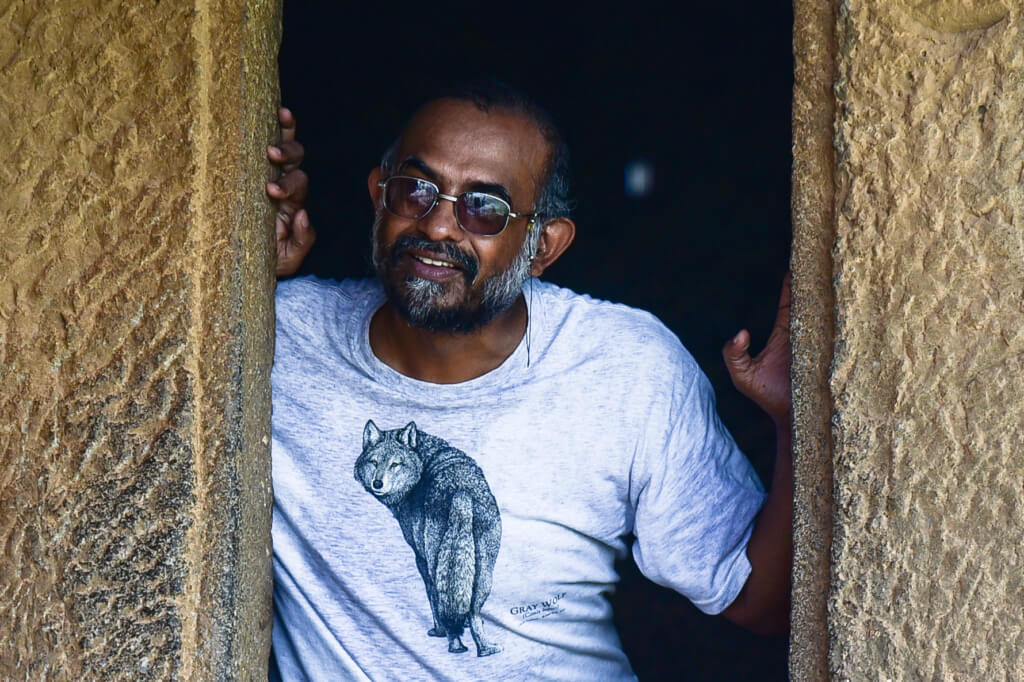Adam Čajka: What does your work involve?
Ashish Kothari: I work with an environmental organisation called Kalpavriksh. It´s a 37-year-old NGO which I helped to start when I was in school. We do a lot of work on environment-development conflicts, supporting communities that are struggling against destructive development projects and which are also trying to construct alternative ways of meeting their needs in more sustainable and equitable ways. Broadly, it´s about what we can call “well-being”. Some of us have developed a framework of human well-being called “Radical Ecological Democracy”. It is an evolving framework of governance in which each person and community has access to the decision-making forums of relevance to them, and in which the decisions taken are infused with ecological and cultural sensitivity, and socio-economic equity.
Ashish Kothari
Kothari is an Indian environmental activist. He is one of the founders of Kalpavriksh, an environmental and social NGO promoting ecological sustainability and social equity.I am also associated with several other organisations: I am chairing the board of Greenpeace India and used to be on the Greenpeace international board. I’m also in the ICCA Consortium, which is a global consortium of indigenous people, communities and NGOs that work on community-based conservation, and a few others.
In Seventh Generation (Sedmá generace) magazine, we had interviews with Indian activists Bahar Dutt and Choitresh Ganguly. It seems that India has taken a fast route of modern development, based on the massive extraction of resources and fossil fuels, leading to pollution and the displacement of people. Is the reality that dark?
Four years back, a colleague and I wrote a book called Churning the Earth. It looks at the 25 years of development of India, which was based on globalized, neo-liberal policies. Even though before that we had a supposedly socialist model, which to some extent was more socialist in terms of self-reliance, public sector companies and things like that, nevertheless it was also based on heavy industrialisation, commercialisation, the use of fossil fuels, etc. Now it’s become worse, because the last three decades have brought much more privatization and economic globalization; much more capitalism. Whatever elements of socialism that were there before are being discarded or weakened. It´s a model that does not see ecological sustainability as being important, and it´s also a model that leaves behind lifestyles and ways of life which are directly connected to nature and natural resources, including small-scale farming, pastoralism, fisheries, forest-dweller livelihoods or crafts based on natural resources. We are talking about hundreds of millions on people who, even now, are dependent on those occupations, lifestyles, and livelihoods. It disprivileges the environment (there are clear signs of ecological unsustainability) and disprivileges all of these communities in many different ways, and actually results in the dispossession of these people from their livelihoods and even actual physical displacement. We are talking about something like 60 million people having been physically displaced from their homes for the sake of so-called development. So it is a pretty dark picture if you look at it from the point of view of these communities and from an ecological perspective.
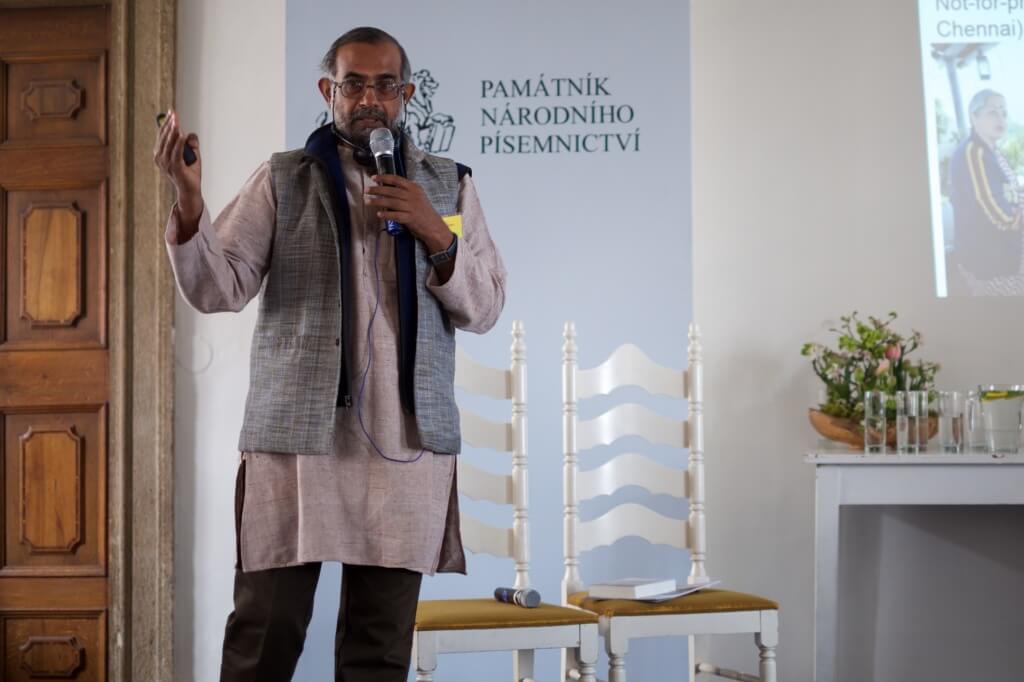
How do you envision non-destructive development that can still move people out of poverty?
What we were told is that all countries have to go through a phase of ecological damage in order to move people out of poverty, to progress, to have economic growth and so forth. But our analysis shows that in India, as in many other countries, there has been some progress but levels of poverty have remained extremely high. We estimate that 50-60% of India is still poor if you define poverty in terms of deprivation from one or more basic needs like adequate food, clean drinking water, health, learning opportunities or housing. So more than half of our population – we are talking about 600, 700 million people – are still poor in many different ways. And 100-200 million people have become newly impoverished, because these were the people who could make sustainable, fairly dignified livelihoods based on small-scale farming, pastoralism or fisheries. They have become newly impoverished because their resources have been taken away or polluted. Small-scale farming is no longer viable with the kind of policies we have: promoting commercial large-scale farming. So according to us, it´s just a false argument that this kind of development reduces poverty. And even for those who become financially, economically rich, there is an impoverishment of spirit and culture because we are all running towards the American way of life, and we are forgetting our cultural diversity, language diversity, and food diversity. It is creating an enormous psychic and spiritual crisis for people who no longer have connections with their own community and nature. The kind of alienation that you see in the West – personal, social and psychic alienation – is also coming to India. All this adds to the serious traditional inequities of caste and gender that we have had in most parts of India.
What we were told is that all countries have to go through a phase of ecological damage in order to move people out of poverty…but our analysis shows that in India there has been some progress but levels of poverty have remained extremely high.
That´s the negative side. What we see is also a counter-trend. Hundreds of organizations, movements and communities are responding to these crises by resisting destructive forms of development, resisting the decline of the cultural and ecological base by creating alternative means of meeting their needs, and not just basic needs but also their aspirations. We have hundreds, probably thousands of examples from India. For instance, many places are switching back to organic, biologically diverse farming. Another example is decentralized water harvesting and governance, so people don´t need to depend on big dams and large-scale water transfers. Or there is decentralized governance where communities are saying, “We don´t need any government dictating to us what we should be doing. We want to be decision-makers ourselves in much more direct forms of democracy”. Or there are alternative forms of livelihood, for instance the revival of traditional crafts – which also involves some modern but eco-friendly consumption patterns. In many ways it is a revival of the best of traditions and integrating this with the best of new ideas and practices. Here I should clarify that not everything traditional is good. There are enormous problems with Indian traditions, including gender and caste inequalities, but there were good elements, especially in terms of the practices people have with the earth and nature. These we can mix with new ways of governance and democratic practices. Across the country you can see the upsurge of people’s movements – including amongst the youth – who want to see a different future and not the kind of destruction we’ve had so far. There is increasing documentation of such initiatives, and recently we started the website www.vikalpsangam.or (or www.alternativesindia.org) to put up stories and perspectives on them.
How would you characterize the Indian environmental movement?
One thing about India is there is nothing like an “Indian” anything. It´s a bit like saying something is “European”. India is as internally diverse as the whole continent of Europe. India´s environmental organizations and movements are of many different kinds, but maybe there are 2 or 3 broad kinds. There are the urban, middle-class environmental NGOs, a bit like the group I belong to. These are of various kinds: some could support people´s movements, community movements, the struggle for justice and equity, but others could also be fighting on more elitist environmental grounds like wildlife protection, even if it´s at the expense of local communities who are living in wildlife areas. Or they fight for a clean Delhi even if it´s at the expense of workers who are working at the factories which are causing pollution. Basically a narrow “NIMBY” (Not In My Back Yard) approach that the factories can go to some other place, but we don´t want them in Delhi. So there are at least two kinds of middle-class NGO movements in cities.
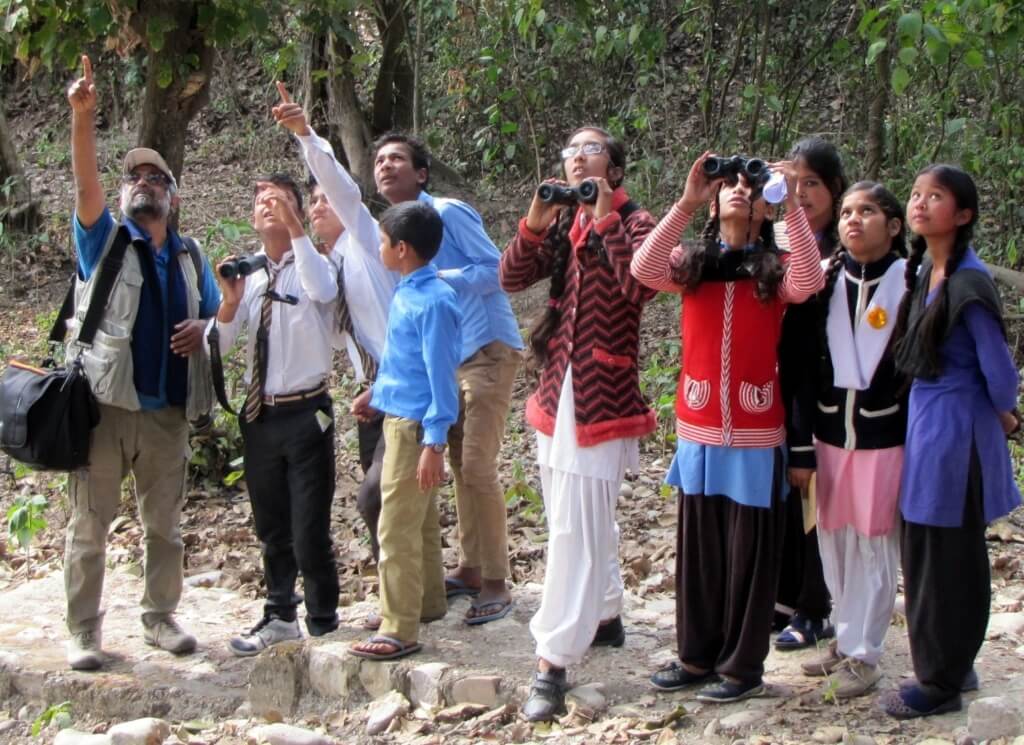
The other kind of environmental movement is more community-based, involving low-income groups or pastoralists, adivasis, tribal people in forests, fishing communities, etc. For them, the environment is actually a means of survival, a means of livelihood. It´s not only an aesthetic thing, but survival. Some call this “environmentalism of the poor” (I would rather say “of the marginalized”, as many of these people are not really “poor”), and it is the most important one. There are lots of these movements across cities and villages.
The third kind of environmentalism would be people interested in more academic research, legal support, taking things to court, doing litigation, etc. These are urban-based and can be pro-poor, or it could again just be the rich doing their own research, undertaking their own legal actions. You have the class, caste and gender divide in these kinds of environmental movements too. It´s very diverse.
How are these movements seen by the public? Are they seen as opposing Indian development?
It depends on how you define the public. If we talk about the urban middle-class who read newspapers and watch TV channels, for many of them the environmentalists are just like you mentioned – those who say no to everything and who do not seem clear about what they want. They are called anti-development and are now increasingly being called anti-national. That´s one image that exists among a certain section of the public. But some amongst the middle class are also increasingly identifying with some aspects of the environment movement, such as the demand for organic food, or for controlling air pollution, as they realize that they are directly impacted. For the poor in villages and cities, environmentalists have two images, for the poor who are struggling to save their livelihoods against the mainstream development model, they think about supportive environmental organizations positively. But for others who are aspiring to the same livelihoods as the middle-class: bigger houses, cars, jobs in factories and so on, again environmentalists are seen as anti-people and anti-development.
The current government has been putting pressure on Greenpeace India. What happened?
Right now it´s still thriving! The government attacked Greenpeace India in different ways. For instance, shutting down its foreign funding accounts. In fact, shutting down even its domestic accounts, but then Greenpeace went to court and the court immediately ordered them to be re-opened. Greenpeace India earns about 60% of its money from within India itself, from about 50 000 supporters. So once those accounts were re-opened they could continue a lot of their operations, but there was a substantial loss of staff. The other attack was on Greenpeace’s tax exemption status. Many NGOs have tax exemption status, but the government was saying, “You are not doing activities which are of social benefit, so why should we give you a tax exemption?” That´s also been challenged in court. And then the third attack was on Greenpeace’s registration itself. Many NGOs are registered as a society or as a trust. They challenged even that registration. If that registration is cancelled, then Greenpeace India has to shut down, at least formally. So far, because of court actions it has continued to survive, and it is as critical and as active as before. I think the main reason for its survival is that there is still substantial public support, even during all these attacks. But also, the attack on Greenpeace is quite symbolic. What the government is trying to say is, “If we can get Greenpeace, we can get any NGO”. It is a signal to all of us, to civil society, that, “You better stop being critical of what we are doing, stop dissenting, behave yourself, go along what we are doing. If not, we´ll shut you down”. It partly works, because lots of NGOs have become quieter and stopped being openly critical of government policies. But I think Indian civil society is strong enough to withstand this latest threat. Hundreds of organizations say dissent is part of our democratic right and we will continue dissenting whatever you do. It´s an interesting period. We´ll see what happens.
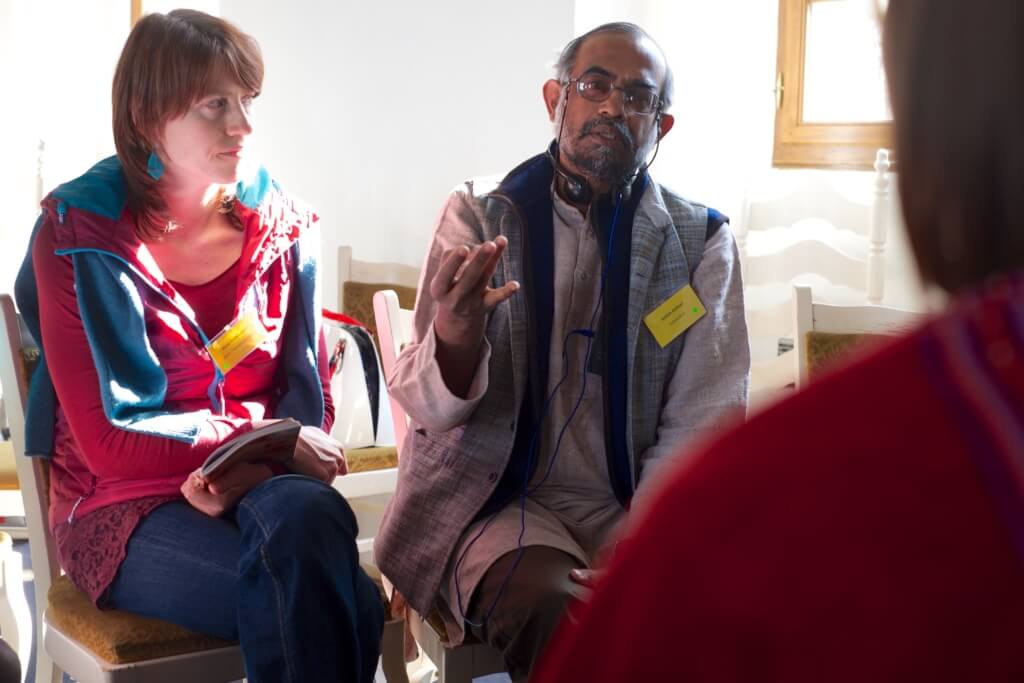
It seems a lot happens on a grassroots level. What are the opportunities on the political level? Is there any chance for a Green Party in India?
I don´t think there is a chance for a Green Party in India in the near future. One big reason is that environmentalists in India have not yet become good enough to position their messages alongside messages of food and poverty and development, which is what the mainstream parties do. They talk about how they will move people out of poverty and how everybody will have food and jobs. Even though they actually work on those issues, the environmentalists are not very good at portraying that message. The other thing is, if you look at Green parties in the world, they actually emerge from middle-class backgrounds. The majority of India´s middle class hasn´t so far been particularly active on environmental issues. There have actually been 2 or 3 attempts to set up a Green party, but it didn´t work.
The second strategy is about how to make existing parties more ecologically sensitive. There have been a few attempts. We also have one new party called Aam Admi Party, which arose from an anti-corruption movement and which is more sensitive towards social issues, but there have been internal troubles. So right now the situation is not very good. The main parties – the Congress and BJP (Bharatiya Janata Party) pay lip-service to the environment in their manifestos, but in practice they are not environmentally sensitive.
Then the third strategy is to have a much stronger non-party political process. All of us are political in some sense or the other. We talk about the question of power: who makes decisions. As we and civil organizations become stronger, we are better able to influence politics, including challenging the concentration of power. It´s the third alternative in terms of politics.
Among the Indian population there is about 7-8% of indigenous adivasis. How can they relate to environmental movements and to more democratic participation in politics?
There are environmentalists who joined some adivasi movements, for instance against mining. There is a good alignment. We work a lot, for instance, with communities fighting for their rights to the forests, or water. There´s a lot of synergy and collaboration. But there is also a good part of the adivasi population that has been brainwashed into thinking that their only salvation is through modern development, and many adivasi politicians get elected and promote that development in a mainstream sense. The government’s welfare policies are likewise oriented towards the mainstream. There is a huge amount of money that goes to adivasi areas, for instance to schools for adivasis. But those schools are run by non-adivasi teachers, they teach in state languages rather than in adivasi languages. Children are actually taught to move away from adivasi ways of life. Unfortunately, they have ended up in neither one place nor the other; they are neither able to continue their traditional, more sustainable ways of life, nor are they able to fit into modern society because the base they started from is far below that of others. It´s impossible, even within two generations, for them to compete. It´s the same with dalits (a term used for the so-called ‘outcasts‘ of Hindu society, the most oppressed and exploited section). Now there is lot of re-thinking in the adivasi movement, and questioning about the method of development they want. The question is, what would adivasi well-being mean in a modernizing India? I believe that in some parts of India, adivasis and environmentalists will be able to work together and search for different ways to well-being. And maybe they will show the rest of society what a sustainable form of well-being could be.
Now I have a few personal questions. What would you say was your biggest professional failure?
Failure or weakness? Looking back, I would say that I could have done more grassroots work rather than activism and research. I think it´s a weakness. I am not able to say there´s been an actual grassroots transformation I have made. Fortunately, other Kalpavriksh members are doing some of that. I also regret not learning more about local cultures and learning more local languages, I think I know much less about India than I should.
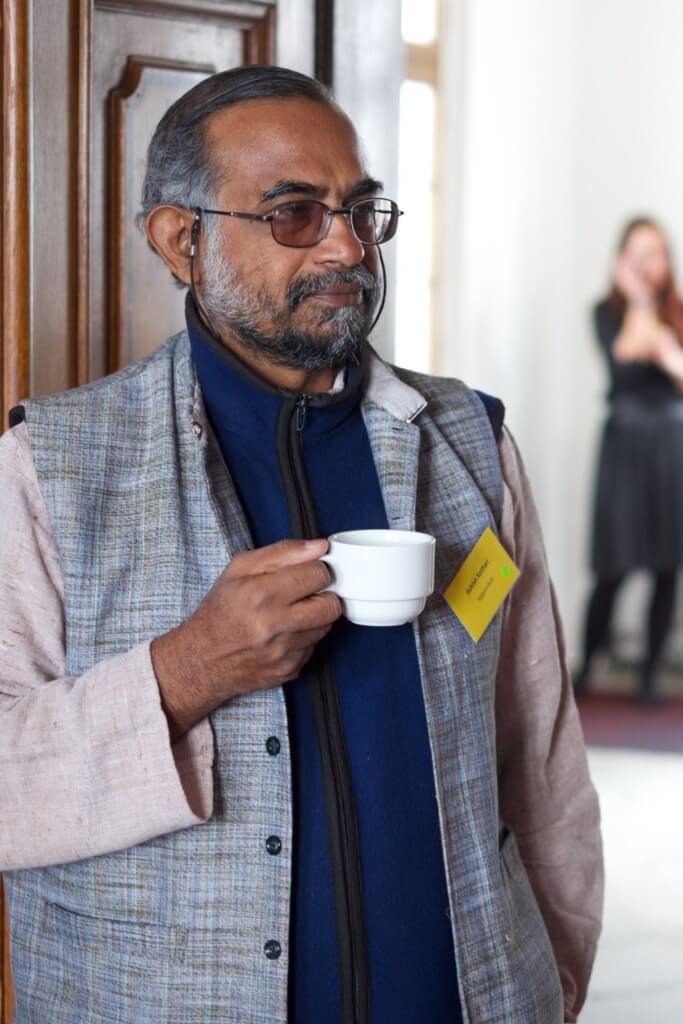
How do you deal with your own ecological footprint? Do you have any particular approach to it?
I think that I, like many people of my class in India, live a contradictory life. I try and reduce my ecological footprint in many ways, for instance I cycle to work and back which is about 15km a day, I don´t use a refrigerator or television, I try to reduce what I consume in terms of less packaging etc. The contradiction is that I do still fly around a lot. I flew to Europe for this trip. And so my carbon footprint is probably quite high despite everything else that I do. Within India, my organisation has a new transport policy to reduce its carbon footprint. But I feel it´s important that I also move around to some other countries. I don´t know what to do about it, but if I stop travelling I won´t be able to do the kind of work I have been doing, and I feel it´s still important. Not just that I want to do it, but because there are global exchanges of people working on these issues. We can learn from each other and create a world movement. We need the local movements but we need also the global ones.
We can learn from each other and create a world movement. We need the local movements but we need also the global ones.
You have already spent a few weeks in Europe. What confluences can you see between initiatives here and those in India? How can we inspire each other?
What still comes naturally in a country like India is the ability to work as part of a collective, to think of things as part of the commons and have solidarity. That has been so much a part of our tradition, and not all has yet been lost. India has the ability to create people´s movements by the people themselves, including the poorest. But every time adivasis go to a demonstration, let´s say in Delhi, they are losing a bit of their daily livelihood, which is a sacrifice. We have the ability to empathize with each other. This is the environmentalism of the marginalised. Maybe it can be an inspiration for what´s happening in Europe.
I have learnt a lot from the last couple of weeks. What I would like to take back to India is the ability to re-think money, even in a highly commercialized, money-dependent economy. Things like time-banking or voluntarism, and the ability to create cooperatives in new sectors, like restaurants. And also the worker-led factory, which I saw in Greece. These are things we don´t have, or have only in a fledgling or unrecognized way, in India. A barter, non-monetary exchange used to be present (and still is in some places and some ways) but in an old way, and not necessarily an egalitarian way. We don´t have places where a group of young people have set up a restaurant as a cooperative. One of the biggest issues in India is what should the youth do. Most young people are being driven towards the American dream. What I have seen here is that some young people are questioning that and are doing things in different ways, like setting up a café in a cooperative manner and saying, “We are going to use part of the revenues for social causes like helping refugees”. We can´t tell young people in Indian cities to go back to farming. But a cooperative café, or small IT industry where everybody has the same pay, those kinds of things may be ideas that could work.
And then there is de-growth. For India as a whole it doesn´t make sense, but certainly there are 100 million people in India who should de-grow because we consume too much. We can´t take exactly the same model from here in Europe, but the fundamental principles and values of working together, of solidarity, of living with less or of listening to the poor, are things we can share with each other. Some of these values and principles are being elaborated as part of a process called Vikalp Sangam (Alternatives Confluence) that we initiated some time back, as a platform to get people working together on alternatives across the whole range of human endeavour, to share and collaborate, and to construct common visions of the future based on a commonly shared set of values and principles.
***
This interview was recorded in April 2016, when Ashish Kothari visited the Czech Republic and Greece on a tour focusing on initiatives of social and solidarity-based economy, co-organized by Ekumenická akademie, the Czech partner in the European SUSY project – Sustainable and Solidarity economy.
This interview first appeared in Sedmá generace magazine 3/2016.
Adam Čajka works for the Czech NGO NaZemi in Brno.
![Political Critique [DISCONTINUED]](http://politicalcritique.org/wp-content/uploads/2015/09/Political-Critique-LOGO.png)
![Political Critique [DISCONTINUED]](http://politicalcritique.org/wp-content/uploads/2015/09/Political-Critique-LOGO-2.png)
